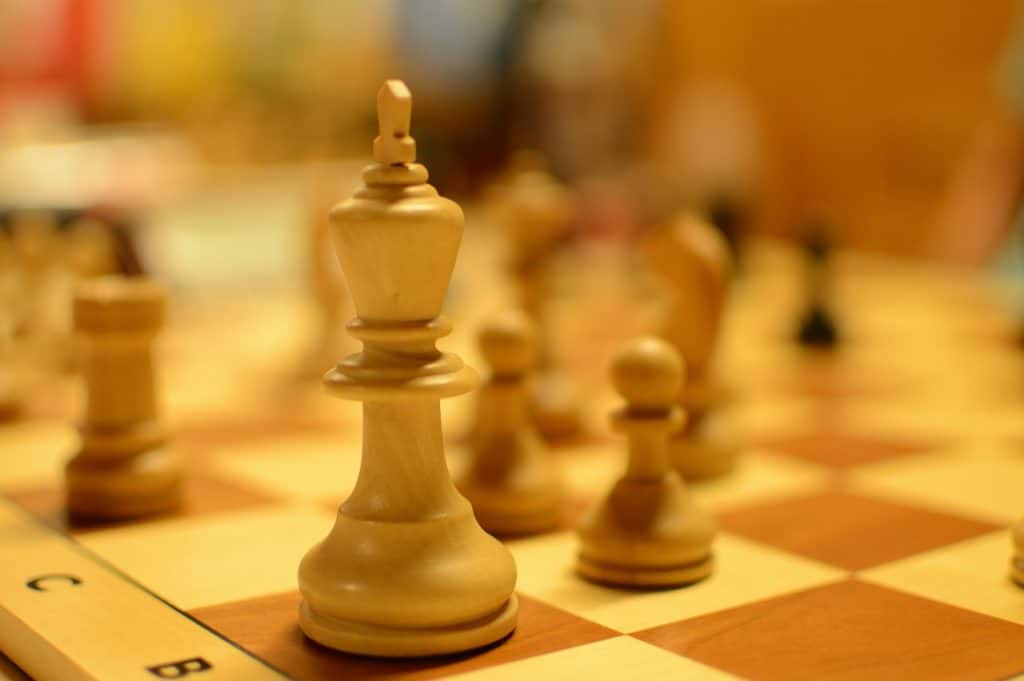Table of Contents
How to castle
Castling in chess is a special movement that allows the player to move the king and a rook simultaneously to one side of the board. This movement is unique, as it allows the player to move two pieces in one move.
The king has two sides to castle, the kingside or the queenside. No matter which way the player chooses to castle, the king will move only two squares in one direction and then put the rook right beside the king.
Rules to castle
There are a few things we have to notice before thinking about castling, for example checking it's legal to castle right now. Let's see the rules of castling in chess:
- Castle will not be possible if the king or rook has moved previously: As soon as the king makes a simple move one square away castle is no longer possible.
- The player can't castle if the king is under attack: In chess, you cannot castle if the king is in check, the king must be free of all dangers to be able to castle.
- The way must be clear: if any of the squares the king crosses as is castling is controlled by the other pieces castling is illegal.
- The king is not in check at the end of the move: You can't play any move that puts your king under a threat.
It's not such a big deal, right? This may be an easy movement to learn, but it's considered a key move, now let's dip into the sauce!
Why should I castle my king?
Castling is an important move in chess. Every beginner in chess is flooded with the same thing repeated over and over again: Put your king into safety.

The safety of our king must be first in our to-do list of the opening, it's useless to think about winning a pawn if you're getting mated in three moves, right?
That's why coaches and books emphasize its importance, castling allows the player to get the king away from the center and developing a piece in one move. It's better to have the king far away from the battlefield.
Normally grandmasters think about the plans of the middle-game just after castling. Organizing and positioning our forces becomes effortless when we develop our pieces.
Many masters agree that it would be difficult to ever develop one rook if castling didn't exist in the game.
If you are going to win the chess game by exploiting the positional disadvantages of your opponent castling is almost needed. Although exceptions exist, in most cases they can't be overlooked.
Castling is not always a good decision
I know is odd to declare castling may not be a good move right after mentioning its great value. But like all of us, chess lovers like to say: Chess is full of exceptions.

Castling in chess is all about timing, objectively, castling is a development move, so it can't be a bad move unless is not tactically ok to do it. It's common to see a beginner struggle to make a decision.
The chess players think of castling as a rule since the very beginning of their journey in chess and don't perceive it correctly. In reality, this is not a rule, it's just what you “should” do in the opening, and is not always right.
Many chess masters have played and won, games without castling because they never sensed a serious threat against their king. Of course, you have to be careful, but in these cases, you can win games very quickly.
The fact that in 99% of the cases is completely fine to castle does not mean it's always going to be the best move. You don't need to be engulfed in this idea, because it won't let you see other possible options.
Many people miss out tactical blows because they paid more attention to their king in the center and didn't notice they could checkmate fastly. It's essential to learn when to attack and when to defend.
Opposite sides castling in chess
Interestingly, when one player castles in the kingside and his opponent castles in the queenside, this kind of position tends to be extremely electrifying.
These games are very exciting because each monarch throws at the other their troops mercilessly without fear. In this scenario, the quiet and slow game that chess sometimes is turns into a violent fight of tactics, sacrifices, and combinations.
When the fray takes this path you have to remember all of the positional aspects of the position won't matter at all. The situation on the board gets really messy, and it's a race against time.
This is a very unique way to enjoy the game we all love because now the fight is not too much about the concepts but mental strength. Here is where the player has to deal with a lot of pressure and remember to create his own threats.
As Bobby Fischer used to say: Chess is a war on the board, the mission is to crush the opponent's mind.
Remember sometimes the attack is the best defense, so don't worry about castling just yet unless is absolutely necessary. You always have to look for the most active or aggressive moves in the position to gain the initiative.
Castling in chess with courtesy
We all know that the piece we touch is the one we should move, so, if castling moves the king and rook at once, which one we should touch and move first?
Castling is considered a king move, that's why it's well known that we have to move the king first, then we move the rook. Also, we must complete the move with just one hand, we should not use both hands to castle.
The player doesn't have to strictly obey these rules, in tournaments, players will not be penalized for this. However, this is accepted as the “politeness” every chess player should have in tournaments, it's almost rude not to follow these regulations.
You may also like:
En Passant in chess — The unusual move!
8 Chess Fundamentals beneficial for your chess
Chess strategy tips for beginners — Play better chess!
[yasr_overall_rating]






